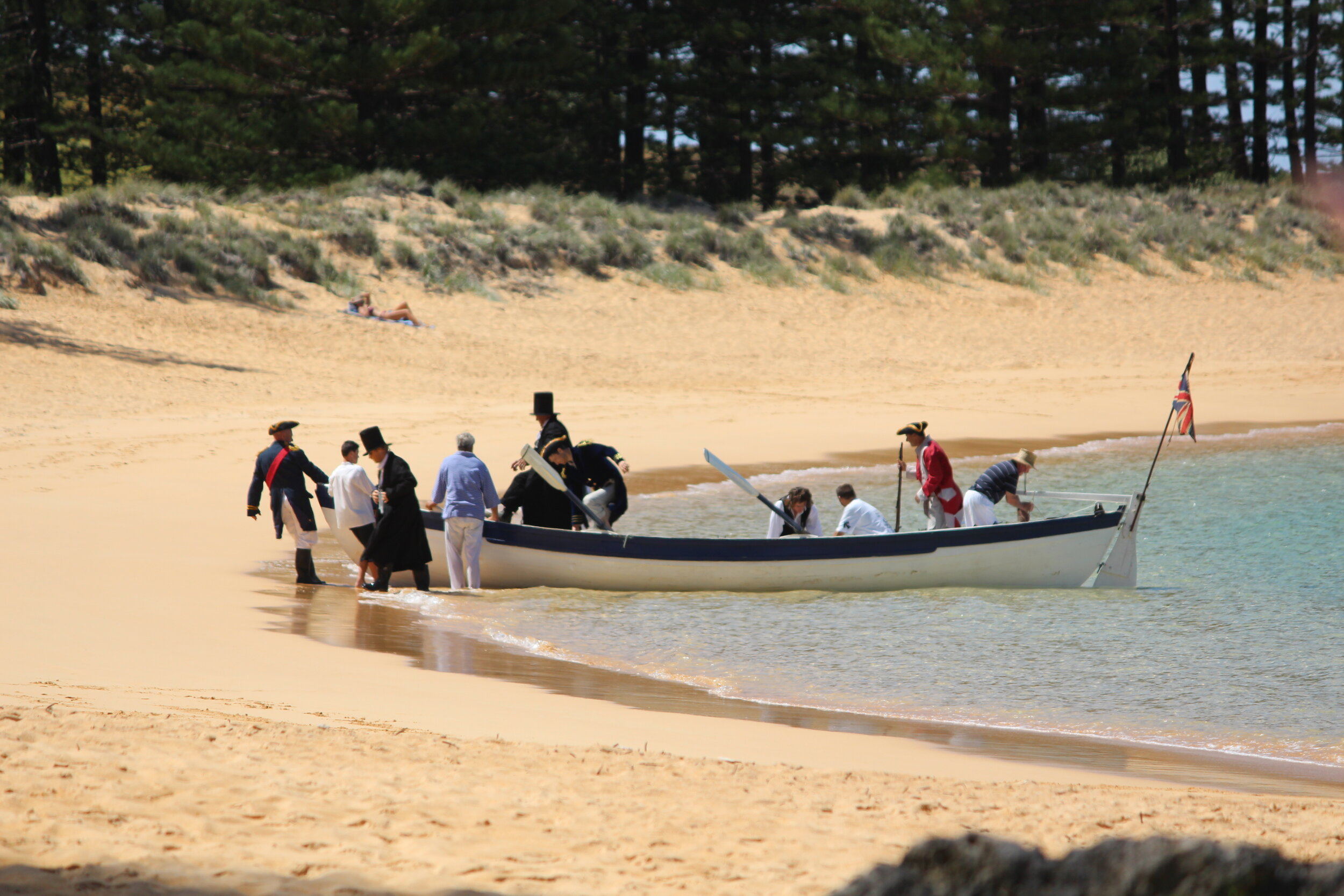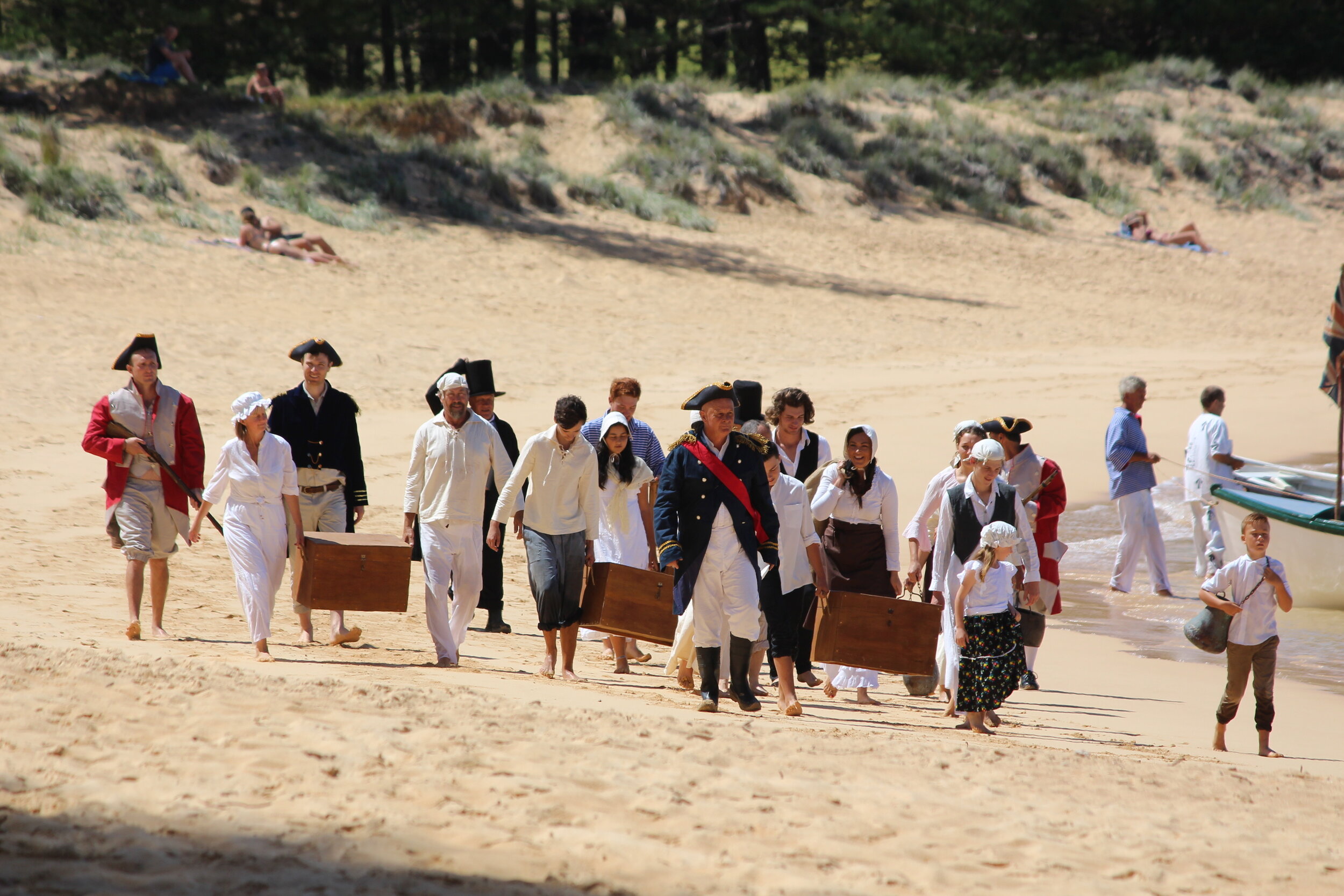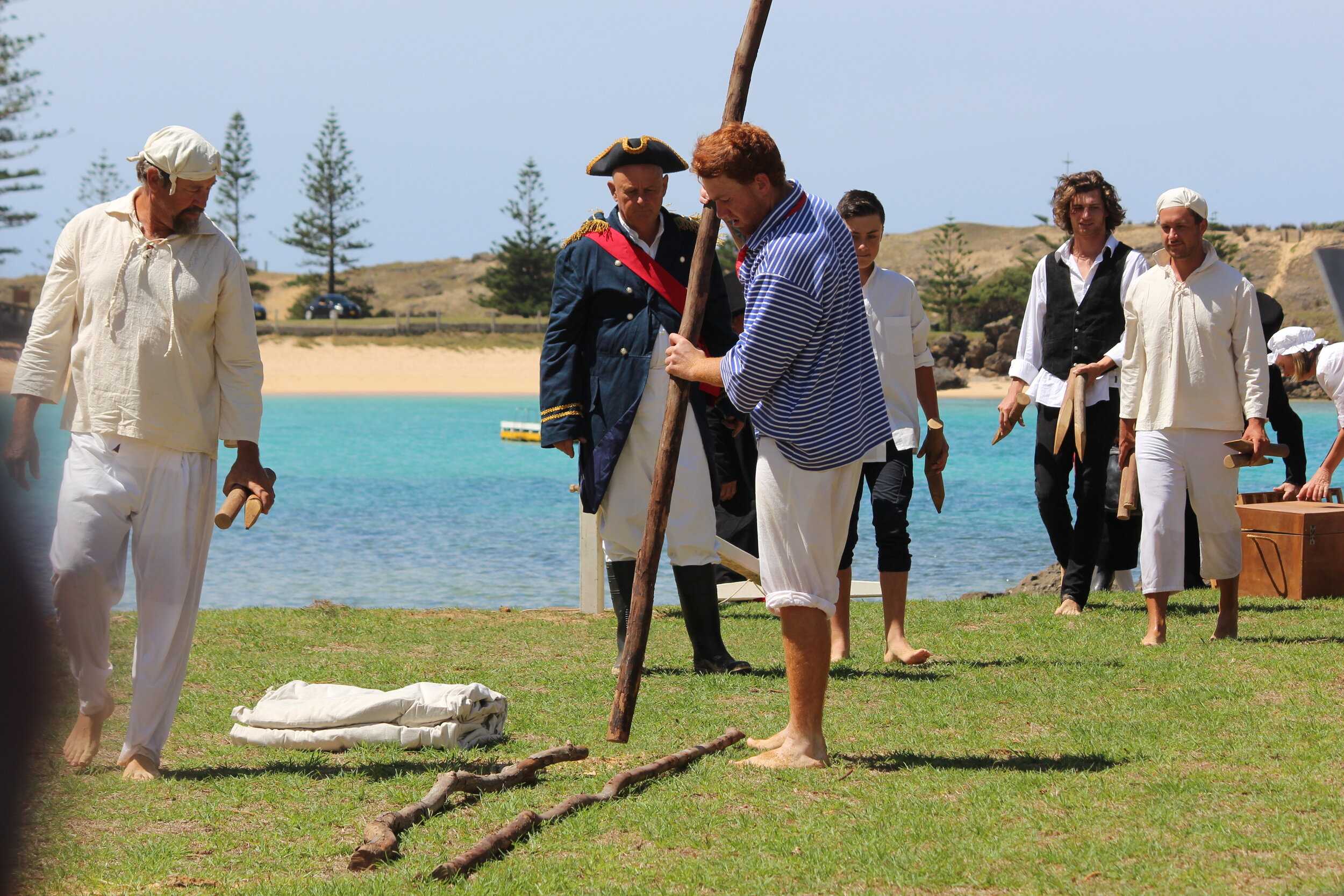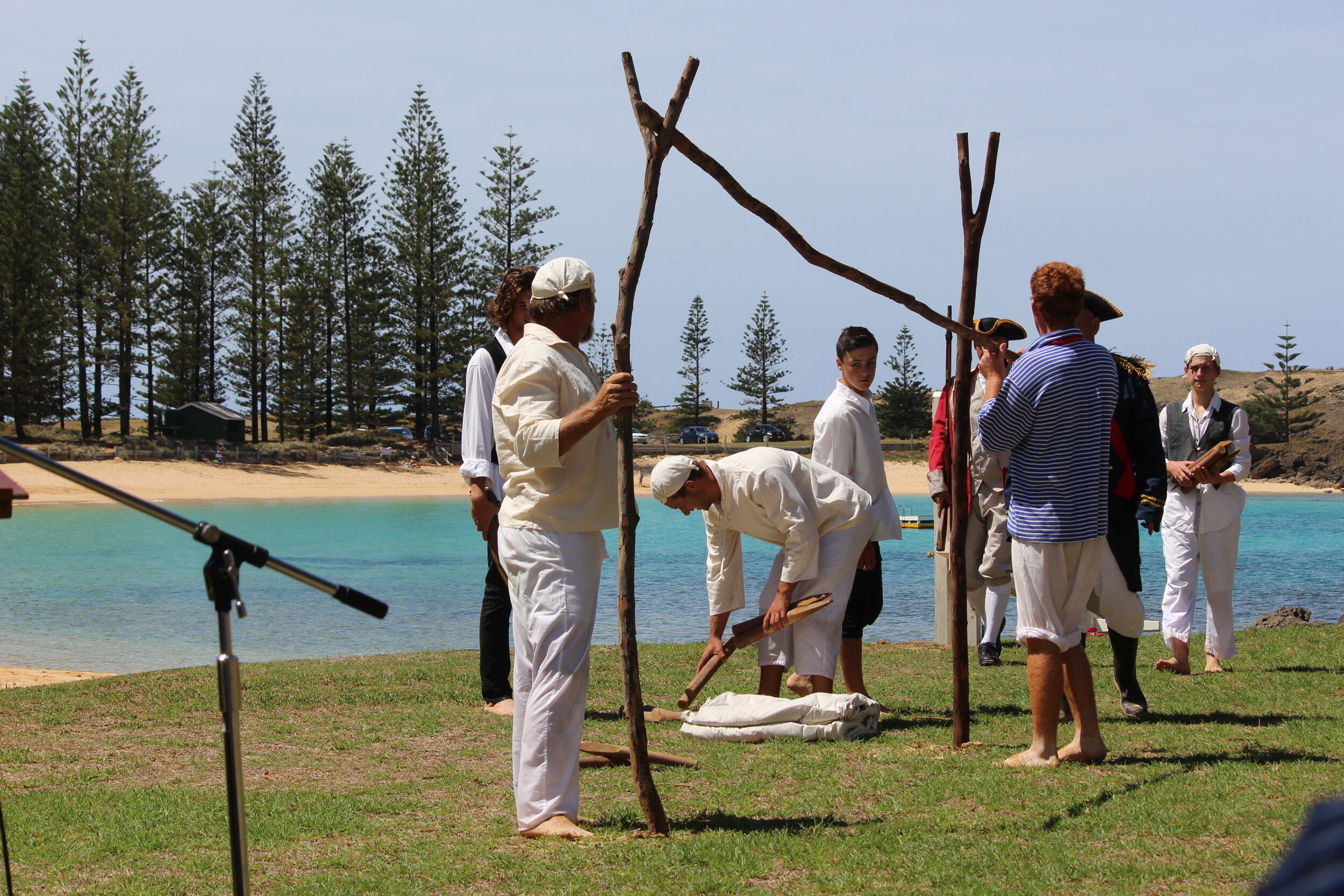Above: Principal settlement of Norfolk Island, 1790, by George Raper (https://nla.gov.au/nla.obj-135310196)
Words and photographs by Susan Prior
World politics, forks in the road, happenstance, coincidence. Call it what you will, but the arrival of colonial settlers on Norfolk Island was the fortunate outcome – for us more than 230 years later, anyway – of all these things. It might not have been so fortunate, though, for those unlucky enough to be caught up in the British penal system of the time.
The first in these circumstances was when Captain James Cook first trained his telescope on the horizon as he sailed across the South Pacific Ocean and espied the island on 10 October 1774. He was aboard the HMS Resolution during his second voyage around the Pacific. He came ashore on 11 October, staying ever so briefly, but long enough to name it Norfolk Isle, in honour of the Duchess of Norfolk, who sadly was already dead at the time of the island’s sighting. With abundant tall straight pines and the tufted, broad-leaved flax, the island immediately piqued his interest. Both of these commodities, he believed, would be useful to the British shipbuilding industry. He returned to his ship the same day and continued his voyage of exploration, sailing south-east to New Zealand and then eventually returning to England in July 1775.
Captain Cook’s landing place on Norfolk Island. Photo taken on October 11 2019, 245 years later to the day.
As Cook sailed away, darkness closing in – perhaps sitting in his cabin writing up his log – he left the island to the seabirds and the trees, at peace with itself once more. But at that moment, as he recorded his observations, the future of Norfolk Island had been irrevocably altered.
But there were other interconnected events occurring in Europe and America at around the same time.
On the other side of the globe in America, rumblings of discontent ricocheted back to the old country. By April 1775 war had broken out against the British. The American Revolutionary War, also known as the American War of Independence, had begun, leading to the eventual defeat of the British in 1781. The repercussions of this for the British were many and significant, but the consequences we are interested in here are these: the transportation of her unwanted felons to the Americas – the miscreants, the petty thieves and swindlers – ceased at the start of the war; and so, too, did the supply of timbers from New England used to manufacture the British fleet’s mainmasts.
If Britain was going to continue to be a major naval power, she needed the materials to build her ships.
Another factor that helped seal the deal for Norfolk Island was the supply of hemp and flax needed by the navy to make sail cloth and cordage, or ropes. Until mid-1786 Britain’s almost exclusive supplier for this very necessary commodity was Russia. But during that northern summer, Empress Catherine II of Russia flexed her muscles of commerce, restricting supply of these to the British. Shocked by this turn of events, and fearful that she would halt supply altogether, the race was now on to find new sources.
Thanks to Cook, Britain was aware that New Zealand had abundant supplies of all these things – and was just two weeks’ sailing from the proposed colony of Botany Bay – but New Zealand also had the disadvantage of being inhabited by formidable and somewhat unwelcoming Maori warriors. How much easier would it be if the supply base was uninhabited?
And then, of course, there were the French. France had signed a treaty of friendship with America in 1778 as a direct outcome of the American Revolutionary War. There is no way the British wanted her grasping any valuable territory. It simply could not be allowed to happen.
In December 1786 it was decided by Order of Council that “the Eastern Coast of New South Wales, or some one or other of the Islands adjacent” would be the new destination for British felons. With this statement Norfolk Island was now firmly in the sights of the British government. On 23 December The Daily Universal Register reported: “The ships for Botany Bay are not to leave all the convicts there; some of them are to be taken to Norfolk Island, which is about eight hundred miles East of Botany Bay, and about four hundred miles short of New Zealand.”
And so it was. Norfolk Island – a silent sentinel to history, uninhabited and alone apart from the winds through the pines and the birds wheeling overhead, and just a tiny rock in the expanse of the South Pacific Ocean – was now destined for a very different future.
On 6 March 1788, just six weeks after the First Fleet arrived in Botany Bay, the British flag was raised on the shore of what is now Kingston, Norfolk Island. Twenty-three settlers consisting of seven freemen and fifteen convicts, and led by Lieutenant Phillip Gidley King, made camp and so began their arduous task to build the fledgling colony.
The rest, as they say is history. In this first settlement, and in the next, Norfolk Island didn’t turn out quite as the British had planned or hoped for, but that is a story for another day. Meanwhile, we are here today celebrating Foundation Day and living on Norfolk Island as a direct result of the British people’s drive to colonise and spread their dominion.
This article was written for Norfolk Island Tourism and first published on their blog on 20 February 2019.








